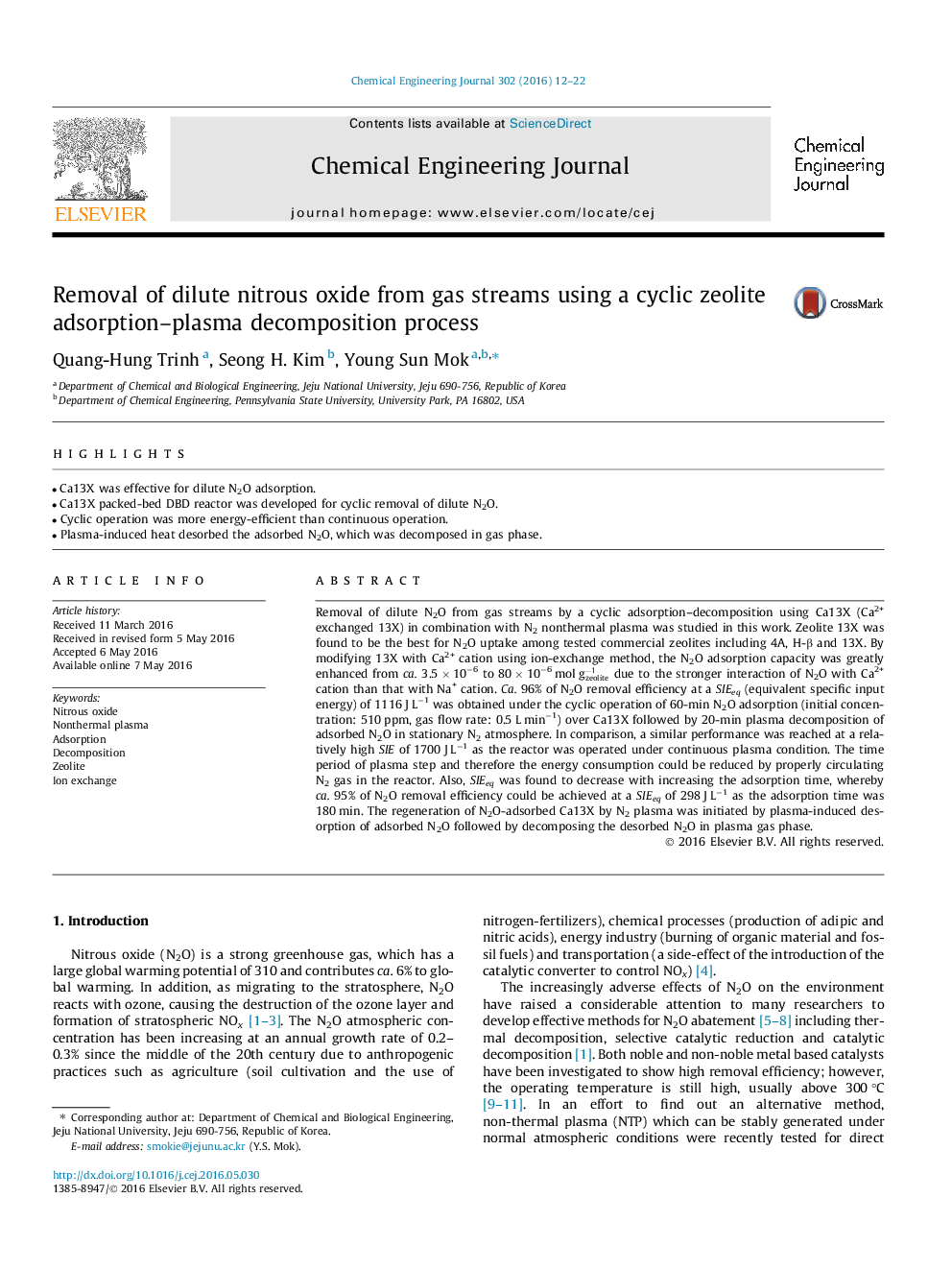| Article ID | Journal | Published Year | Pages | File Type |
|---|---|---|---|---|
| 145293 | Chemical Engineering Journal | 2016 | 11 Pages |
•Ca13X was effective for dilute N2O adsorption.•Ca13X packed-bed DBD reactor was developed for cyclic removal of dilute N2O.•Cyclic operation was more energy-efficient than continuous operation.•Plasma-induced heat desorbed the adsorbed N2O, which was decomposed in gas phase.
Removal of dilute N2O from gas streams by a cyclic adsorption–decomposition using Ca13X (Ca2+ exchanged 13X) in combination with N2 nonthermal plasma was studied in this work. Zeolite 13X was found to be the best for N2O uptake among tested commercial zeolites including 4A, H-β and 13X. By modifying 13X with Ca2+ cation using ion-exchange method, the N2O adsorption capacity was greatly enhanced from ca. 3.5 × 10−6 to 80 × 10−6 molgzeolite-1 due to the stronger interaction of N2O with Ca2+ cation than that with Na+ cation. Ca. 96% of N2O removal efficiency at a SIEeq (equivalent specific input energy) of 1116 J L−1 was obtained under the cyclic operation of 60-min N2O adsorption (initial concentration: 510 ppm, gas flow rate: 0.5 L min−1) over Ca13X followed by 20-min plasma decomposition of adsorbed N2O in stationary N2 atmosphere. In comparison, a similar performance was reached at a relatively high SIE of 1700 J L−1 as the reactor was operated under continuous plasma condition. The time period of plasma step and therefore the energy consumption could be reduced by properly circulating N2 gas in the reactor. Also, SIEeq was found to decrease with increasing the adsorption time, whereby ca. 95% of N2O removal efficiency could be achieved at a SIEeq of 298 J L−1 as the adsorption time was 180 min. The regeneration of N2O-adsorbed Ca13X by N2 plasma was initiated by plasma-induced desorption of adsorbed N2O followed by decomposing the desorbed N2O in plasma gas phase.
